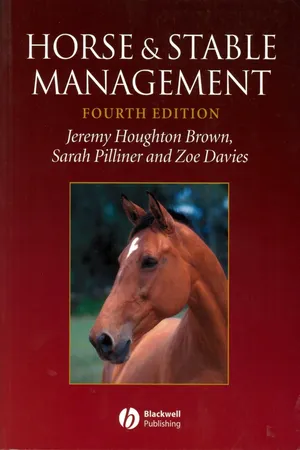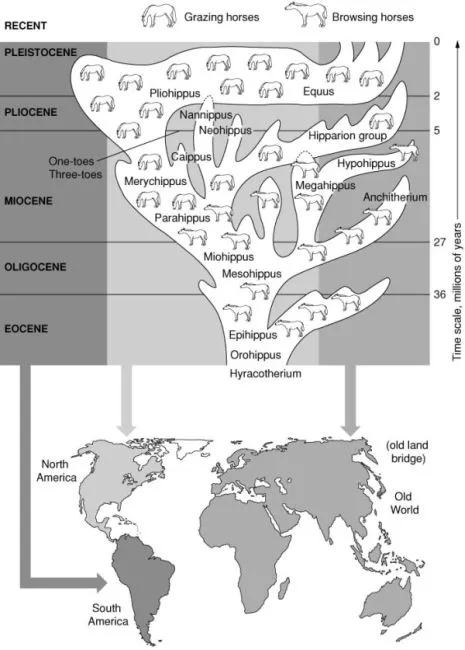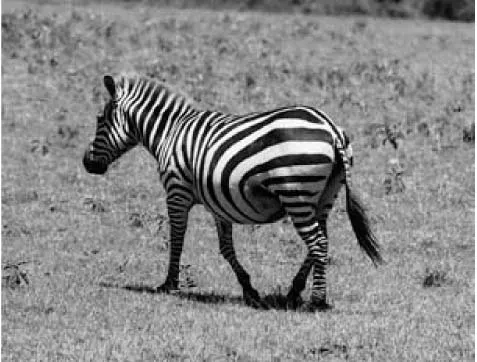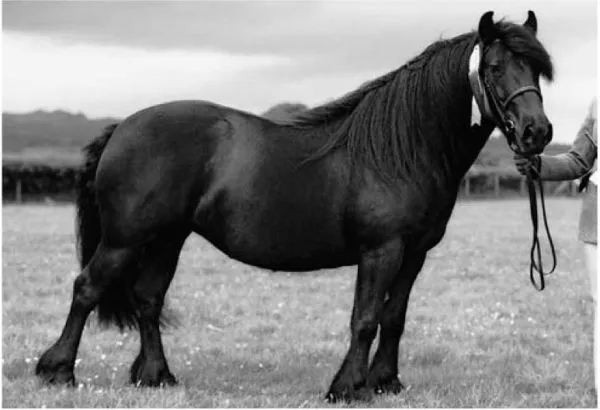![]()
Part 1
The horse
![]()
Chapter 1
Horse care through understanding its origins
Horses and humans
An understanding between humans and the horses in their care is essential in the proper management of horses. An appreciation of the horse’s evolution and natural instincts, structure and their basic requirements will help to ensure a good relationship between horses and their carers.
The most significant attribute arising from the horse’s development is probably the ability to adapt. The horse has adapted first through changes in climate and vegetation and then to living with humans. The modern horse now relies on humans to meet its needs, and a consideration of the horse and its character provides for better understanding and care.
Evolution and domestication of the horse
Horses evolved over approximately 50 million years from fox-like creatures to the animals that we know today. Fossils found in North America and Europe give us a clear picture of the development of the modern-day horse from its prehistoric ancestors.
Ancestors
The horse’s most distant ancestor was Hyracotherium (also known as eohippus or dawn horse), a specialised browsing herbivore, similar in size to a fox.
Hyracotherium had three toes on the hindfeet and four toes on the forefeet. Relatives of Hyracotherium lived from 50 to 38 million years ago and were swamp and forest dwelling. Hyracotherium first emerged in North America; however before the Baring Straits separated the two continents some animals migrated across the land bridges to Europe. Hyracotherium was a potential food source for large carnivores and therefore highly alert, with the ability to scurry away quickly from approaching predators; this is why horses have an inherent nature of caution and alertness. Even the earliest ancestors of the horse had acutely developed senses of sight, sound and smell to help them escape from their predators.
Figure 1.1 outlines the evolutionary path of the modern horse.
Survival of the fittest
Over the following millions of years, climate changes including ice ages with glaciations, led to the migration of huge numbers of animals to more temperate climates. Also, huge movements of landmasses effectively cut off migratory routes, thereby leaving some species stranded. Those unable to adapt to extreme weather conditions became extinct, whereas others slowly adapted to their new and different environments. Adaptation to new environments takes place through changes to the genetic makeup of the animal that are known as mutations. These changes take place over millions of years and result in a process of selection whereby those animals with genetic changes that result in increased ability to survive live on, while others become extinct. Many different types of animal that had mutated in this way succeeded Hyracotherium, some were highly successful whereas others were not and were lost.
The grazers
Climate changes led to changes in vegetation with new surroundings, such as cooler open plains and grasslands. Grasslands are by their nature open areas and the horses’ ancestors no longer had the cover of bush and woodland. Two groups of three-toed horses were around at this time: the browsers and the grazers. The browsers eventually became extinct around 11 million years ago. The grazers adapted to their environment; they developed longer limbs specialised for speed to escape dangerous predators and the number of toes reduced from three to one to further support a speedy get away.
These grazing ancestors not only became taller and one toed, but at the same time further changed to suit their grazing way of life. Changes in the teeth and jaws enabled them to cut and chew large amounts of tough grass. Also, the size of the head changed to accommodate this battery of grinding teeth. The grazer’s neck also became longer so that the taller animal could reach down to the grass to eat.
Grass is not as nutritious as the diet of the forest-browsing Hyracotherium and the horse’s grazing ancestors had to consume much larger quantities of grass to support their increased size so they became trickle-feeding grazers, taking in large quantities of grass over long periods. This meant that changes to the animal’s digestive tract had to take place and the gut adapted by increasing in size to digest large quantities of fibrous grass. This in turn resulted in the animals having longer and stronger backs from which to suspend the gut.
The grazing animals needed well-developed senses so that they could detect predators. They also developed the ability to sleep while standing to enable a quick get away. The horse gets up front feet first, after lying down, for a quick escape; whereas horned animals get up back end first in a defensive head down position.
The herd animal
At some point, the horse’s ancestors developed an important social network for survival, living more safely and in harmony with others within their own herds. These one-toed horses belonged to the group Equus and these were the most recent ancestors of the modern horse, asses, zebras (Figure 1.2) and donkeys. For reasons that remain unclear, Equus became extinct in North America but several types of Equus survived in Europe and Asia. These evolved into different types, some were pony types whereas others were similar to small horses. These types gave rise to the many different breeds of modern horses.
Equus family
Table 1.2 lists some of the different species of Equus which live today.
Table 1.2. Some present-day species of Equus
| Domesticated horse | Equus caballus |
| Przewalski’s horse | Equus ferus przewalskii |
| Persian wild ass (onager) | Equus heminonus onager |
| Domestic ass (donkey) | Equus asinus |
| African wild ass | Equus africanus |
| Burchell’s zebra (plains or common zebra) | Equus burchelli |
| Mountain zebra | Equus zebra |
| Grevy’s zebra | Equus grevyi |
The horses and ponies of today have not changed greatly since Equus arrived roughly 5 million years ago. Their behavioural patterns are deeply rooted in their genetic makeup and must be considered and used during the training process.
Domestication
There is no doubt that mankind has contributed significantly to the success of the horse. Without human domestication there is reasonable argument to suggest that horses and ponies would have been greatly reduced in number, perhaps even becoming extinct. Humans would probably have simply hunted them for food, rather than using them in other ways. Before horses were domesticated for work, they were used as a food source. The horse’s speed made it difficult at first for humans to keep up with them to kill them and the hunters had to become very inventive in their techniques. For example, evidence shows that some hunters used the technique of running horses off a cliff to kill them.
The first stage of domestication involved the nomadic tribes of central Asia keeping horses for their meat and mares for their milk production. The second phase of domestication took place with more placid types of horse, probably around 4000 BC. Farmers, when moving from area to area, used horses as pack animals to carry their goods. Sooner or later, a child or infirm person would also have been placed on this load. For bulkier loads the travois was devised with two poles crossed over the horse’s withers and their butts trailing on the ground. Then came sledges and finally, with the advent of wheels, carts.
People began to ride horses, probably due to the need to herd animals. At about 1500 BC, a simple bone bit was devised. The horse became an integral part of human life and history.
Breeds and types
Horses were domesticated at different times and places throughout the world, leading to large varieties in breed and type. For example, in northwest Europe, with its wet climate, the native stock was akin to Exmoor ponies. In north Eurasia, with its colder climate, a heavier pony more akin to a Highland was domesticated. In western Asia, the fine-boned horses were Caspian’s type and on the steppes of central Asia, the native horses were similar to the Akhal-Teke, which are still there today.
Modern horses and ponies can have their origins traced back to these four basic types. By breeding to meet human requirements the following now exist:
- hotbloods: Thoroughbreds and Arabs
- warmbloods: carriage and sports horses
- coldbloods: heavy draught horses
- ponies: with deep bodies and shorter legs.
These category names do not relate in any way to body temperature, in fact, they describe temperament and speed. The Thoroughbred tends to be more temperamental, faster, sharper and quick witted than the draught horse.
The larger and heavier horses are a comparatively modern feat of breeding as, in the 1500s, horses rarely exceeded 15 hands. The eighteenth century was the most notable for progress in selective breeding for specific purposes.
The horse in Europe and Asia
The Celts eventually arrived in Britain bringing their horses with them; these were crossed with indigenous types to produce the Celtic pony. The Celtic pony is the ancestor of many of the British native breeds, e.g. the Dales (Figure 1.3). The Romans and other invaders brought many different types with them to Britain.
From 6000 years ago, quieter horses were used to carry burdens and then ridden for herding purposes. The wheel was devised about 3500 BC and used for carts; later the spoked wheel led to chariots, which were pulled by onagers (Persian wild asses), which were larger than the horses of that time. Mounted soldiers were first seen in about 1000 BC and later mounted couriers provided swift communications. Light cavalry horses were critical to the Persian Empire (500–300 BC). Then Alexander the Great, riding his horse, Bucephalus, created the Greek empire. This was eventually over-run by Attila the Hun, who had the advantage of stirrups in 450 AD.
The horse collar provided more efficient pulling and so improved transport from about 500 AD. Heavier horses, still no more than 15 hands, allowed soldiers to wear more armour and the crusades between 1100 and 1200 provided a contrast between armoured knights and Arabs on faster more nimble horses.
In 1200 Genghis Khan from Mongolia used his soldiers on their small ponies, to capture much of Asia. They played polo for recreation.
The ‘high school’ style of riding began with the Renaissance in about 1500. Hunting on horseback started in the eleventh century and by the eighteenth century jumping was necessary due to the Enclosures Act. Racing was formalised in 1750, but the three great Arab sires, namely the Darley Arabian, Byerley Turk and the Godolphin Arabian, the foundation of all Thoroughbreds had already arrived. The Byerley Turk was put to stud in England in 1690. The Darley Arabian arrived in 1704 and was the great grand sire of Eclipse. The Godolphin Arabian arrived in 1728.
Cavalry were used in war until 1941 and the British army’s pack mules were last used in 1975.
Horses were important in agriculture from the eighteenth century to the 1950s.
The horse in America
During the sixteenth century the Spanish Conquistadors arrived in North America by boat, bringing their horses with them. Thus horses were re-introduced to their native land where they had become extinct many years previously. These domesticated horses brought in by the Spanish became a major factor in the settlement of the continent; many escaped and became wild leading to the establishment of herds of wild horses in America. ...




